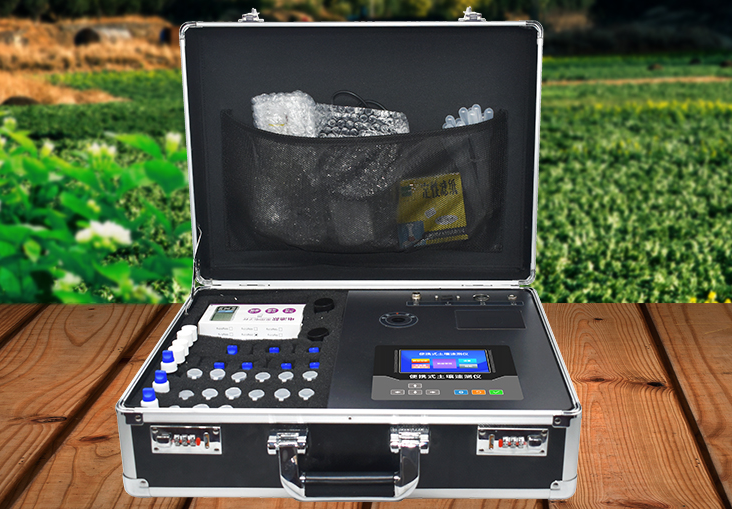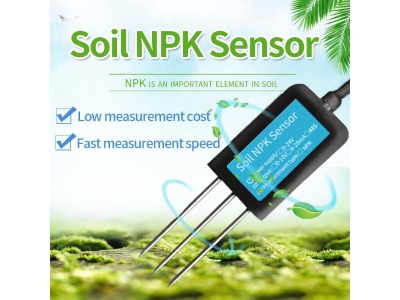Agriculture plays a vital role in ensuring food security and meeting the demands of a growing global population. To maximize crop growth and productivity, farmers need accurate and timely information about soil conditions. Soil sensors have emerged as powerful tools that enable farmers to monitor and optimize crucial parameters such as moisture levels, nutrient content, temperature, and pH. This article explores the role of soil sensors in enhancing crop growth and productivity, their benefits, and potential applications in modern agriculture.

- Real-time Monitoring of Soil Conditions: Soil sensors provide real-time data on various key soil parameters, enabling farmers to make informed decisions regarding irrigation scheduling, fertilization, and other agronomic practices. By continuously monitoring soil moisture levels, farmers can avoid both under- and over-irrigation, ensuring optimal water use efficiency and preventing water stress for crops. Similarly, nutrient sensors help farmers assess the nutrient availability in the soil, allowing for precise fertilizer application and minimizing nutrient waste.
- Precision Agriculture and Resource Optimization: Soil sensors are integral components of precision agriculture systems that aim to optimize resource allocation and minimize environmental impact. By providing accurate and localized soil information, these sensors enable site-specific management strategies, where farmers can apply inputs, such as water and fertilizers, only where they are needed. This targeted approach helps reduce costs, conserve resources, and minimize the potential adverse effects of excessive chemical usage on soil and water quality.
- Early Detection of Soil Issues and Disease Prevention: Timely detection of soil-related issues is crucial for preventing crop losses and improving yields. Soil sensors can detect fluctuations in key soil parameters, such as pH and nutrient levels, which may indicate soil degradation or imbalances. Early detection allows farmers to take remedial actions promptly, such as adjusting pH, supplementing deficient nutrients, or implementing soil conservation practices. Additionally, soil sensors can help identify disease-prone areas in the field, facilitating targeted preventive measures and reducing the risk of crop diseases.
- Climate Change Adaptation: Climate change poses significant challenges for agriculture, with alterations in temperature patterns, rainfall distribution, and extreme weather events affecting crop growth. Soil sensors provide valuable data on soil temperature, moisture, and other variables, aiding farmers in adapting to changing climatic conditions. By monitoring soil conditions in real-time, farmers can adjust irrigation schedules, adopt appropriate crop varieties, and implement climate-smart practices to optimize crop growth and resilience in the face of climate uncertainties.
- Integration with Data Analytics and Automation: The integration of soil sensors with data analytics tools and automation systems allows for intelligent decision-making and efficient resource management. Analyzing large volumes of sensor data helps identify patterns, correlations, and optimal thresholds for different crops and soil types. Advanced algorithms and models can then provide predictive insights, guiding farmers in making data-driven decisions regarding irrigation, fertilization, and overall crop management. Automation systems can be programmed to respond to sensor data, automatically adjusting irrigation systems or nutrient application rates based on real-time soil conditions.
- Potential Applications in Smart Farming: Soil sensors hold immense potential in the domain of smart farming, where technology-driven solutions are employed to optimize agricultural practices. In addition to moisture and nutrient sensors, emerging soil sensor technologies include sensors for measuring soil salinity, compaction, organic matter content, and microbial activity. Integration with other agricultural technologies, such as remote sensing, drones, and robotics, can further enhance the efficiency and effectiveness of soil monitoring and management. These advancements enable farmers to transition towards data-informed, sustainable, and environmentally-friendly farming practices.

Conclusion: Soil sensors play a crucial role in improving crop growth, productivity, and sustainability in modern agriculture. Real-time monitoring of soil conditions allows for precise resource allocation, timely interventions, and adaptation to changing environmental factors. By integrating soil sensors with data analytics and automation, farmers can optimize nutrient and water management, minimize environmental impact, and enhance overall farm efficiency. The potential applications of soil sensors in smart farming highlight the future possibilities for precision agriculture and sustainable food production. Continued advancements in sensor technology will empower farmers to make informed decisions and meet the challenges of feeding the growing global population while ensuring the long-term health of agricultural ecosystems.
